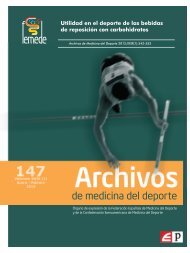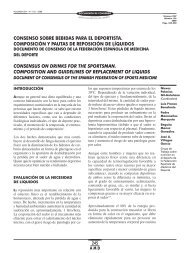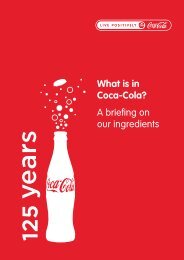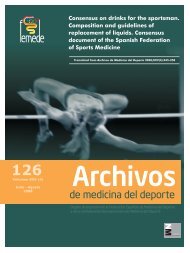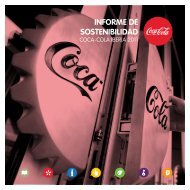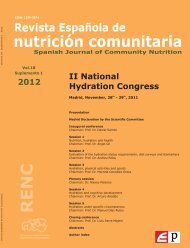athletes' medical information - Coca-Cola
athletes' medical information - Coca-Cola
athletes' medical information - Coca-Cola
You also want an ePaper? Increase the reach of your titles
YUMPU automatically turns print PDFs into web optimized ePapers that Google loves.
athletes’ <strong>medical</strong> <strong>information</strong><br />
Nutrition for<br />
power sports<br />
Examples:<br />
Middle distance running, track cycling, rowing,<br />
canoeing/kayaking and swimming<br />
Features and challenges<br />
Success is defined by the ability to produce<br />
very high power outputs for races of 1-10<br />
minutes.<br />
The continuum of fuel systems need to be<br />
well developed, requiring a highly periodised<br />
training program.<br />
Nutrition goals change substantially with<br />
phase of training:<br />
- General preparation: high-volume training,<br />
manipulation of body composition<br />
- Specific preparation: high-intensity training,<br />
often with specialised periods such as<br />
altitude training<br />
- Taper/competition: lower volume/<br />
high-intensity training; race focus,<br />
avoidance of weight gain<br />
- Transition: light training, small weight<br />
gain usual<br />
Goals during training include achieving ideal<br />
physique, usually involving low body fat levels,<br />
and in some sports, muscularity. Competition<br />
physique may only be maintained for a short<br />
period. Some loss of physique during<br />
off-periods of the year, but athletes should try<br />
to minimise this.<br />
Performance of a race may be limited by<br />
build-up of acidity related to sustained<br />
high-intensity work.<br />
Competitive events often involve multiple<br />
rounds (heats, semis, finals, etc.).<br />
Top 10 eating strategies for<br />
power sports:<br />
1. Vary energy intake between training<br />
phases according to the training load.<br />
2. Consume moderate-high levels of<br />
carbohydrate according to the fuel<br />
needs of the training phase.<br />
3. Consume fluids and carbohydrate<br />
during prolonged training sessions to<br />
support hydration and fuel needs.<br />
4. Consume a source of high-quality<br />
protein (20-25 g) and carbohydrate<br />
soon after key workouts to promote<br />
refuelling and adaptation.<br />
5. Achieve competition physique goals<br />
gradually, with major effort during<br />
base phase and fine-tuning just prior<br />
to racing season.<br />
6. Consider the use of supplements<br />
carefully: options include creatine<br />
and buffers that are intracellular<br />
( -alanine) or extracellular<br />
(bicarbonate).<br />
7. Choose a suitable pre-event meal<br />
that keeps you comfortable during<br />
your event.<br />
8. If there are heats and finals in your<br />
event, and especially, if you are<br />
competing in more than one event in<br />
a session, make sure you have access<br />
to fluids and foods to recover between<br />
races.<br />
52<br />
12-113-COC_Paralymics_Booklet_20120718.indd 52<br />
7/18/12 4:29 PM






